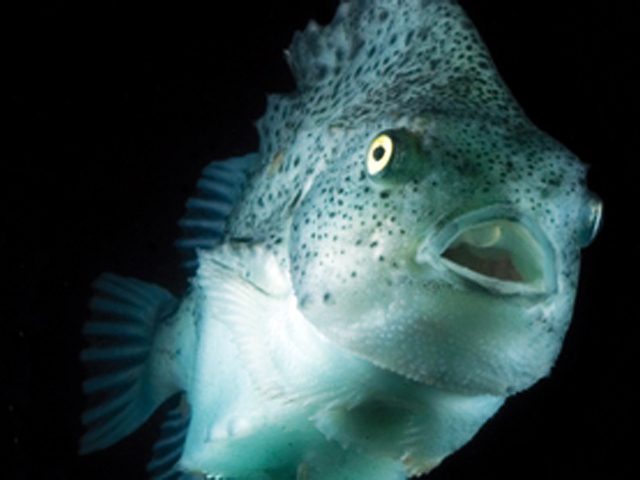Knowledge of Vitamin A and the eye’s of humans and lumpfish could help fish-farmers
“Lumpfish need healthy vision to see and eat food, no matter whether that food is feed pellets, sea lice on salmon or other wild crustacea in our oceans,” Memorial University’s Dr. Robert Gendron was quoted by one of the school’s chroniclers as saying.
In a development showing where Canadian brains are being diverted, Dr. Gendon (a human health expert) has joined the study of farmed salmon’s friend, Cyclopterus lumpus. For comparison, Norwegian politicians last week allowed themselves to be filmed holding juvenile lumpfish at the launch of a new aquaculture research facility.
Lumpfish are used to clean nets, pens and salmon of the salmon plague, sea lice, a pest affecting both wild and farmed salmon.

Dr. Gendron is part of a multidisciplinary team studying how the diets of lice-eating lumpfish affect their vision. He comes from the University’s Faculty of Medicine, where he’s used retina scanners to scan human eyes, a method now being used on the newly prized lumpfish, a species being farmed to help salmon, as wild stocks of both cannot meet demand.
Dr. Gendron’s teamed up with Dr. William Driedzic of the Ocean Sciences faculty to learn how dietary vitamins affect the vision health of juvenile lumpfish.
“Retinal blood vessel permeability” in the retinas of smelt and humans appeared similar in earlier studies. One thing led to the next, and now the two scientists are studying lumpfish eye sight and diet. The Logy Bay farmed lumpfish eat a special diet — a lot of Vitamin A — and are monitored for eye sight changes.
“The eyesight of lumpfish is important, because in addition to their commercial value in the province, they are now also beginning to be used as a means of de-licing aquaculture salmon,” Dr. Gendron told a University writer. The better the fish see, the more useful they are to the aquaculture industry, he told the chronicler.
Vitamin A
The best farmed lumpfish diet is sought. So, too, is an ability by the fish, salmon and humans to regulate the absorption of Vitamin A while stressed.
“Since vitamin A metabolism is central to a range of human retinal diseases,” he said, “understanding how lumpfish might manage vitamin A metabolism in the face of stress could teach us a thing or two not only about basic lumpfish biology, but also about how to better understand how the human retina handles vitamin A during stress and disease.”
Memorial University’s Dr. Driedzic is key to the study, with his research interest in the effects on metabolic pathways of low-oxygen and low-temperature extremes.
The Norwegian Directorate of Fisheries has called the lumpfish “the third most important farmed species in Norway after salmon and rainbow trout” in terms of value. It’s commercial volumes have surpassed 12 million fish.

